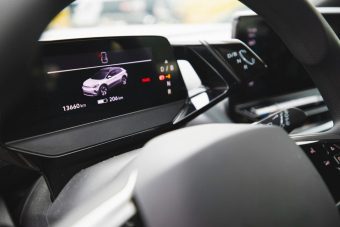
Abandoning fossil fuels is part of global efforts to produce electricity efficiently and with as little pollution as possible, which further implies the transition to renewable energy sources.
The European Union is actively working to encourage the production of green kilowatts and promote environmentally friendly vehicles. It devised a plan whereby the sale of petrol and diesel cars will be phased out of the EU market by 2035. However, solar panels, car batteries, wind turbines and similar technologies require metals such as cobalt, nickel, lithium and others, whose extraction is neither simple nor without consequences. Today, the largest deposits of these much-needed metals are mostly located in countries with economic or geopolitical problems, which makes it difficult to regulate permits, or mining takes place under difficult or illegal working conditions, such as in Africa, while at the same time, this process also leaves environmental consequences.
As the RES sector is becoming increasingly popular, the demand for the necessary components is also growing in parallel. This implies that bigger production will require more of the aforementioned materials (cobalt, lithium, nickel…) in many other locations of the world. As the demand increases, there is a fear of inadequate supply, because these resources are limited and large deposits may be exhausted as a result of future expansion. As scientists from the Chalmers University of Technology in Sweden explain, the current deposits cannot satisfy the mentioned future expansion, especially when it comes to electric cars and the growing number of car manufacturers moving to mass production.
More:
- MINI NUCLEAR BATTERIES – TECHNOLOGICAL INNOVATION FOR EVERY DAY?
- ENERGETIK ENERGIJA D.O.O.- NEW AND UNIQUE LIVE TECHNICAL TRAINING “BATTERIES AND LEGISLATION 2024” IN COOPERATION WITH SOLAREDGE
- ABB EXPANDS PARTNERSHIP WITH NORTHVOLT TO ELECTRIFY THE WORLD’S LARGEST BATTERY RECYCLING FACILITY
We need to search for new technologies, because lithium sources may reach the point of exhaustion, while the market and the demand for raw materials continue to grow.

Chalmers’ research team embarked on testing sodium-ion batteries, which, as the name says, mostly rely on sodium, which is much more common than lithium. When examining the density, life span, environmental aspect and other characteristics, they concluded that sodium-ion batteries are better in terms of supply due to their accessibility, but the environmental aspect and climate.
Overall, sodium-ion batteries use sodium, an element that is much more abundant than lithium because it can also be extracted from sea salt. This makes them potentially cheaper, more environmentally friendly and more available. Lithium-ion batteries, on the other hand, have a higher density and therefore store larger amounts of energy in a smaller space compared to sodium-ion batteries. This makes them ideal for applications where space and weight are limited, such as electric vehicles. Sodium-ion batteries can operate over a wider range of temperatures and can therefore withstand more severe weather conditions, while lithium-ion batteries are known to have altered performance during cold days or extreme heat, which results in a much shorter drive as the car uses more energy when it’s very cold outside.
Technology is changing fast though. The development of sodium-ion batteries and their use for energy storage in the power grid are imminent. With further development, this battery could also be used in electric cars, given the scarcity of lithium deposits.



